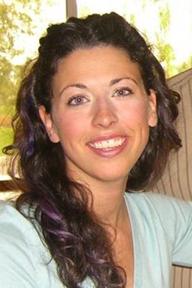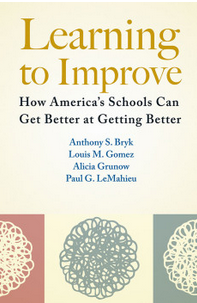CIRCL News
Thanks to energetic involvement of our program committee (including teachers and graduate students), facilitators, organizers, and participants, Cyberlearning 2015 was a great success. Available highlights include a blog (Investigators Chart New Frontiers at Cyberlearning 2015), keynote videos (webcast recordings), and the event archive (Cyberlearning 2015). We also had great experiences in visiting congressional offices on Capitol Hill and sharing information about cyberlearning.
Below, we feature another great opportunity to amplify your work, the upcoming Teaching and Learning Video Showcase. This may be especially appropriate for sharing early stage designs and research — and we promise you’ll get constructive feedback. It also would be a great way for graduate students, early career investigators and newer participants in Cyberlearning to be more widely featured. The Video Showcase is brought to you through a collaboration with other resource centers, and is a reminder that you can participate in more than one resource center to advance your work.
NSF 2015 Teaching and Learning Video Showcase
On May 11-15, 2015, the NSF 2015 Teaching and Learning Video Showcase: Improving Science, Math, Engineering Computer Science, and Technology K-12 will showcase cutting-edge NSF-funded work to improve teaching and learning, and allow colleagues affiliated with MSPnet, CADRE, CIRCL, CAISE, STELAR, CS10Kcommunity, and ARC to view, discuss, and comment on each others’ work. We invite you to submit and present a 3-minute video that showcases your intervention, innovation, and/or research. Your video should also address potential impact, promise, and challenges. Submissions are due by April 1. Learn more about this showcase event, criteria for submissions, and how to apply.
Opportunities & Upcoming Deadlines: P4I Webinar, I-Corps, NSF Cyberlearning, STEM+C & more
Join our upcoming webinar, How to Transition Cyberlearning Technologies out of the University, led by Lewis Johnson and hosted by CIRCL Partnering for Impact on April 16 from 2-3 pm ET.
Get 50K for educational research to product from NSF I-Corps. CIRCL Partnering for Impact can help you find a mentor.
NSF Cyberlearning proposals for Capacity-Building Projects (CAPs) are due March 27, and Letters of Intent for Integration (INT) Projects are due May 11. If you are considering submitting, we recommend that you watch CIRCL’s archived recording of the NSF Informational Cyberlearning Solicitation Webinar led by NSF Program Officer Christopher Hoadley.
NSF STEM + Computing Partnerships (STEM+C) proposals on learning and teaching of STEM and computing are due April 15. A solicitation webinar was held in February; if you missed it, see the STEM+C Solicitation Webinar Archive.
Apply to attend the 11th Annual LearnLab Summer School at Carnegie Mellon University, Pittsburgh, PA, on July 13-17, 2015. This intensive five-day course focuses on a wide range of advanced learning technologies for course development and scientific research.
GenderIT 2015: Advancing Diversity will be held April 24-25 at the University of Pennsylvania. Topics include: promoting computer science education in K-12, understanding developments around gender and gaming, and developing new interventions and applications for STEM.
Submissions are due May 15 for the Special Issue on Technology-enhanced assessment: Agency change in the educational eco-system, to be published in the Interaction Design and Architecture(s) Journal (IxD&A).
HICSS Social Media & Learning Minitrack invites papers that address leading edge innovation, research methods and design to analyze and support learning through social media. Full papers are due June 15, 2015.
CIRCL 2014 Project Survey: Fast Facts
In 2014, CIRCL sent a survey to 99 PIs of projects funded by the NSF Cyberlearning program, of which 73 people responded. The survey covered a variety of topics, including project focus, participants, approaches to research, product development, dissemination, and opportunities to strengthen the portfolio. See CIRCL Portfolio Monitoring: 2014 Fast Facts to learn more about the diversity of projects funded by the NSF Cyberlearning program. In 2015, CIRCL will expand the survey to reach the broader spectrum of NSF-funded research falling under the Cyberlearning theme (see Cyberlearning Across NSF, below).
Featured Perspective: Meet Amy Ogan
Amy Ogan is an Assistant Professor in the Human-Computer Interaction Institute at Carnegie Mellon University.
How did you get started in cyberlearning?
My path into cyberlearning happened in a very roundabout way. My background is in computer science, Spanish, and human-computer interaction. The moment of inspiration happened as an undergraduate student when I was participating in a study abroad program in Spain. My new friends asked me, “What are Americans really like?” I was struck with this idea that we are constantly exporting culturally-situated materials like TV, movies, and songs, but that it’s really hard for people to understand the deeper cultural meanings and values of the material. It’s even harder to thrive when you have to go to live or work in a new environment. As I realized the disconnect between our products and our culture, it inspired me to start designing simulation environments that students could use to practice intercultural communication skills. Read more of Amy Ogan’s perspective.
Project Spotlight: Activity Monitor Game Increases Youth Fitness
Lifestyle-driven disease is responsible for nearly 70% of deaths in the United States, and there is a current epidemic of child and adolescent obesity. Urban minority youth are most at-risk for these health concerns. As a result of playing a videogame that syncs with 24/7 wearable monitors, youth ages 11-14 are increasing their fitness awareness and physical activity. Initial results suggest that, contrary to popular belief, game features involving customization are more motivating than competition for increasing physical activity. Active-display wearable devices are also necessary for youth to pay close attention to their real-world behavior. Finally, youth strategies to become more physically active are sustainable when they involve taking advantage of existing opportunities for exercise, rather than trying to invent new ones. Learn more about the Educating Teens to Understand Personal Health (GET-UP) project led by Cynthia Ching and Bruce German at the University of California-Davis (NSF grant 1217317).
Cyberlearning Across NSF
A sample of projects with a cyberlearning theme funded by programs across NSF.
- Design and Development Research: Deploying Adaptive Learning Environments to Overcome Background Deficiencies and Facilitate Mastery of Computer Engineering Content, funded by DUE IUSE. PI: Brock LaMeres, Montana State University.
- Collaborative Research: ITEST-Strategies: Human-Centered Robotics Experiences for Exploring Engineering, Computer Science, and Society, funded by DRL ITEST. PI: Seta Bogosyan, University of Alaska Fairbanks Campus.
- AISL Pathways: The Role of Story in Games to Teach Computer Science Concepts to Middle School Girls, funded by DRL RES ON GENDER IN SCI & ENGINE, AISL. PI: Elisabeth Gee, Arizona State University.
- Situating Big Data: Assessing Game-Based STEM Learning in Context, funded by DRL REAL. PI: Constance Steinkuehler, University of Wisconsin-Madison.
- Collaborative Research: Undergraduate Students’ Epistemology and Expectations of Experimental Physics, funded by DUE IUSE. PI: Heather Lewandowski, University of Colorado at Boulder.
- Re-imagining Video-Based Online Learning, funded by DRL DRK-12. PI: Joanne Lobato, San Diego State University Foundation.
- Strategic Problem-based Approach to Rouse Computer Science (SPARCS), funded by DRL ITEST. PI: Harvey Siy, University of Nebraska at Omaha.
- The Global Learning Council: a Broad Cross-Sector Dialogue about Best Practices in the Development of Learning Technologies, funded by DUE IUSE. PI: Justine Cassell, Carnegie-Mellon University.
- Engaging Middle School Girls in Computational Electronic Design, funded by DRL ITEST. PI: Nichole Pinkard, DePaul University.
- Development and Assessment of Teaching Tools to Facilitate the Implementation of Construction Industry Simulation (COINS) in Lower Division Courses, funded by DUE S-STEM:SCHLR SCI TECH ENG&MATH, IUSE. PI: Thomas Korman, California Polytechnic State University Foundation.
Resource & Tech Corner: VPTL Data Portal, i3, edSurge & more
Stanford’s Vice Provost for Teaching and Learning (VPTL) has completed its portal for sharing archived learner data from select online courses. The purpose of the portal is to enable ethically responsible, peer-governed scientific inquiry. Learn more and apply for access to archived learner data.
The Investing in Innovation Fund (i3) program provides grants to organizations with a proven record of raising student achievement for the purpose of harvesting their effective practices. Learn about the innovative contributions grantees are making in the areas of student achievement, dropout rates, high school graduation rates, or college enrollment and completion rates.
edSurge reports on the latest trends and opportunities in the edtech industry with the goal of connecting the emerging community of edtech entrepreneurs and educators. Post or find jobs in the edTech industry, search their database of edtech projects, read edSurge reports, follow edSurge on twitter and facebook, and subscribe to edSurge newsletters to learn more.
New NAPLeS videos feature Professor Sten Ludvigsen on Workplace learning with digital resources and Gerhard Fischer on MOOCs as Components of Rich Landscapes of Learning. Access the entire collection of videos under the Guided video tour through the learning sciences.
The Common Guidelines Checklists developed by the EvaluATE project help proposal developers make sure that their projects meet the Justification, Evidence, and External Feedback criteria for each of the 6 types of research in the Common Guidelines for Education Research & Development. A nice graphic overview of the checklist is also available.
Articles & Publications: L@S, JSEdT, Learning to Improve, RALLe
Have a recent publication or article about your cyberlearning project? Let us know and we’ll announce it here!
All of the Learning@Scale 2015 papers are currently open access in the ACM Digital Library.
The April 2015 issue of the Journal of Science Education and Technology (JSEdT) focuses on science teaching and learning with models.
Learning to Improve, a new book by Anthony Bryk, Louis Gomez, Alicia Grunow, and Paul LeMahieu, details how Networked Improvement Communities (NICs), when anchored by six improvement principles, offer a new model for improving our schools.
Alelo Develops Interactive Robot for Learning Chinese. Read about Lewis Johnson’s RALLe project, which is investigating how to design simulation-based learning experiences for language learning that optimize learner motivation and promote conversational skills.
Share Your News
Have some news (project highlights, job opportunities, RFPs, calls, etc.) that you want to share? Contact CIRCL.
CIRCL is supported by NSF grants IIS-1233722 and IIS-1441631. Any opinions, findings, and conclusions or recommendations expressed in this material are those of the author(s) and do not necessarily reflect the views of the National Science Foundation.









